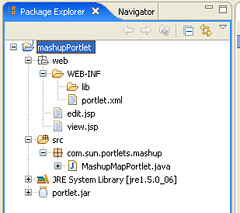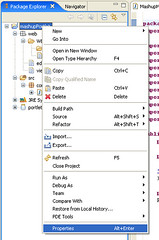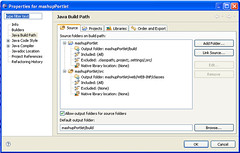Business model
JBoss est une application open-source, tout le monde peut ainsi connaitre le mode complet de fabrication, et également participer, corriger des bugs, ajouter de nouvelles fonctionnalités... Comme le veut la licence GPL, ce logiciel est gratuit.
Ok, mais d'ou vient l'argent???
En fait, Marc Fleury, initiateur du projet JBoss, et premier programmeur de l'équipe, a créé une entreprise nommée JBoss Group, qui fournit un support sur les applications développées sous JBoss...
Ce monsieur définit ainsi son action (sur 01.net) :
Le modèle commercial, établi pour le serveur d'applications J2EE Open Source JBoss, est simple. Le serveur est gratuit, JBoss Group se rémunère sur la maintenance des applications. « C'est une démarche qui déroute les clients habitués aux modèles classiques, mais qu'ils apprécient vite. Tout le monde y trouve son compte. La maintenance nécessite beaucoup moins d'efforts commerciaux que la vente de licences. Notre service est facturé à l'application. Plus il y a de bugs, mieux nous gagnons notre vie. Si le bug provient du serveur, l'assistance est illimitée. S'il provient de l'application, nous le facturons. Il nous est arrivé de revoir complètement un logiciel, ce qui a été facturé en conseil, avec un autre tarif, et non pas en service. » Le soutien de la communauté des développeurs JBoss représente un atout important. « Ils améliorent constamment notre serveur et nous permettent de nous focaliser sur l'assistance aux utilisateurs » , conclut Marc Fleury.
Et voila, tout le monde y gagne, et on réussit à s'affranchir de ce pénible coté "vente de licences" et "marketing"...
JBoss Group est depuis le 5/06/2006 une filiale de Red Hat, un des grands du conseil autour de Linux...
Le produit
JBoss 4.0.4 a fait sa sortie le 24 Mai 2006, retour sur la courte histoire de ce produit qui a su se tailler une place de choix parmi les grand éditeurs de serveurs d'application J2EE.
La version 1, démarrée par Marc Flerury en Mars 1999 sort en Février 2000, à l'époque, il s'agit principalement de supporter les EJB, session (service) et entity (persistance).
La version 2, sortie en 2002, ajoute le support de :
- JMX Java management extension :
- administration des applications déployées dur le serveur d'app
- statistiques serveurs sur les applications, les pools...
- JMS : Java Messaging service, qui offre une gestion de files de messages (comparable à MQSeries d'IBM)
La version 3, sortie également en 2002, se voit certifié J2EE version 1.3 (EJB 2.0, Servlets 2.3, JCA, etc) par Sun, JBoss devient un concurrent vraiment sérieux pour IBM Wesphere AS, BEA WebLogic et leurs concurrents...
JBoss 4 sort en Octobre 2004, il est alors le premier à être CERTIFI2 J2EE 1.4, coup dur pour ses concurrents...
Il propose en particulier le support d'EJB 3 (Java 5 nécessaire...). JBoss 4 supporte Java 1.4, cependant l'ensemble des fonctionnalités ne sont pas disponibles avec cette version de Java.
Le rôle de conteneur de servlets, nécessaire pour les webapps, est assuré par Tomcat, quand à la CMP (container managed persistence), elle est assurée par Hibernate !
L'environnement de développement proposé par le JBoss Group (entreprise de conseil autour de JBoss) est Eclipse assoocié aux plugins JBoss.
JBoss fournit également un mécanisme nommé JBossCache, cache d'objets, transactionnel et distribué (sur un cluster par exemple).
On trouve également en standard un scheduler qui permet de lancer des tâches à des dates précises.
La gestion du farming est assurée : elle concerne le redéploiement automatisé des composants distribués sur l'ensemble du cluster (ferme de serveurs).
Coté portabilité, JBoss s'en tire plutôt bien, écrit entièrement en Java, il est portable sur tout systême possédant la version correcte de Java...Ainsi porter toutes les applications d'un serveur Windows vers un Linux se fera de manière transparente.
Allez, l'essayer, c'est l'adopter...


 )
)
 with the special HTML tag <xml>.
with the special HTML tag <xml>. )
)


 L'injection de dépendances (DI Dependency Injection) encore connue sous le nom d'inversion de contrôle (IOC Inversion of control IOC) est un concept qui mène sa petite révolution depuis quelques temps. J'ai donc fouillé un peu, et je vous recommande chaudement
L'injection de dépendances (DI Dependency Injection) encore connue sous le nom d'inversion de contrôle (IOC Inversion of control IOC) est un concept qui mène sa petite révolution depuis quelques temps. J'ai donc fouillé un peu, et je vous recommande chaudement 






